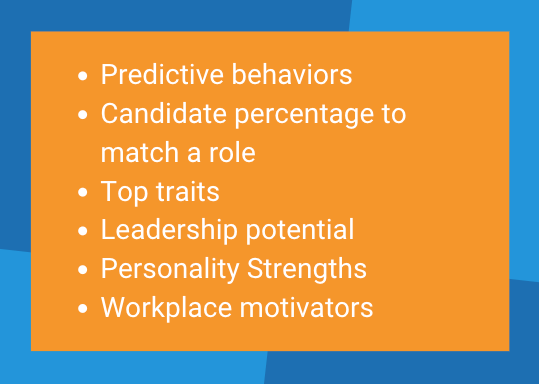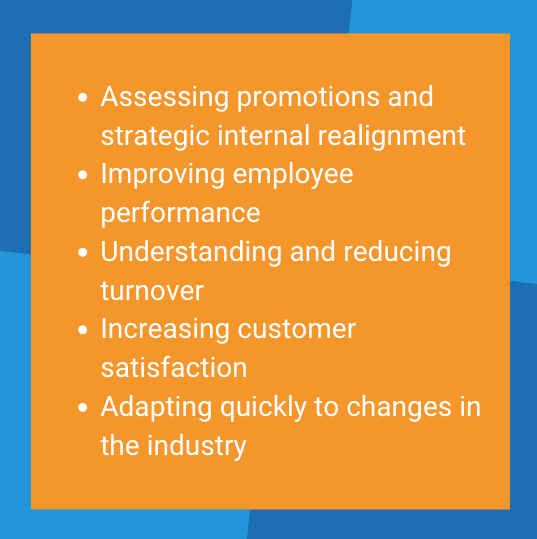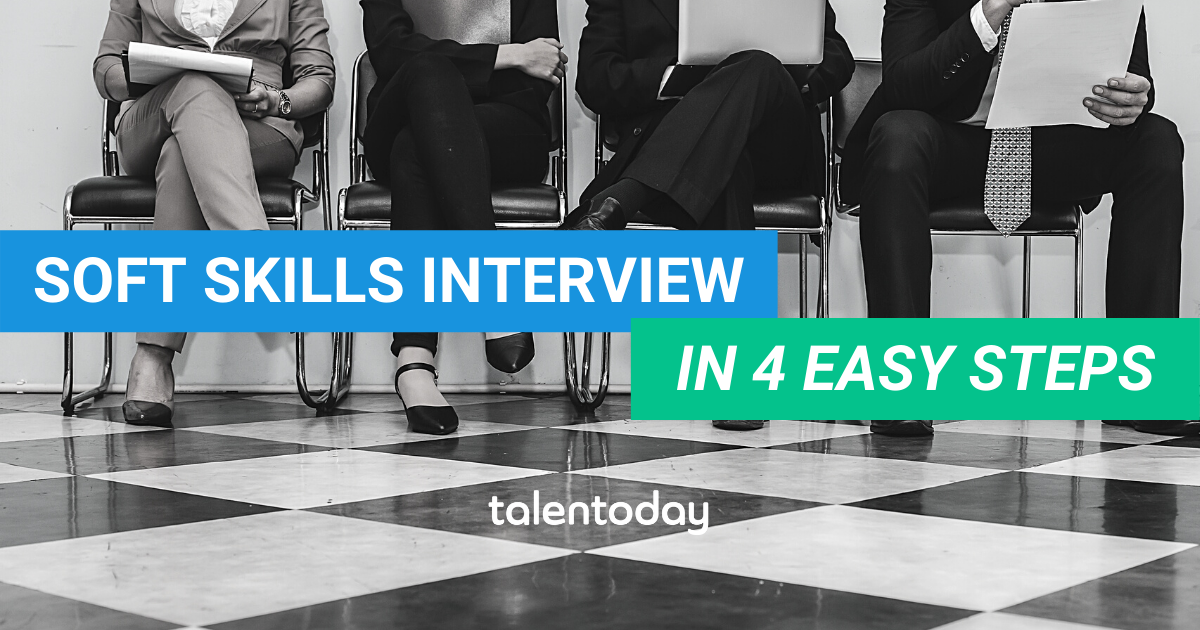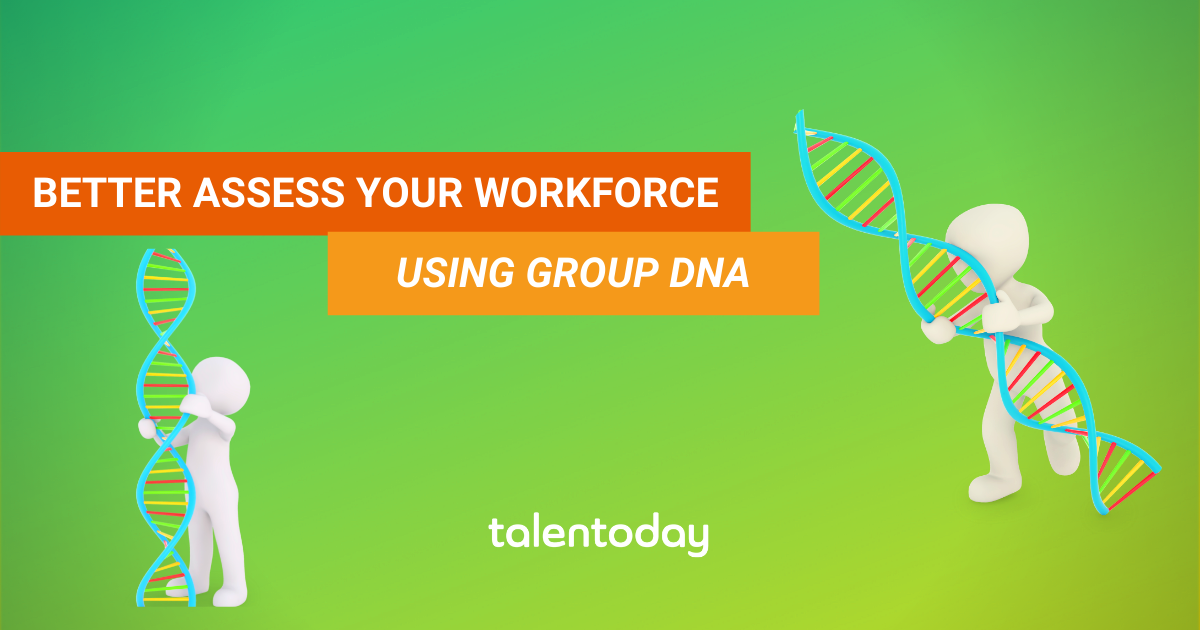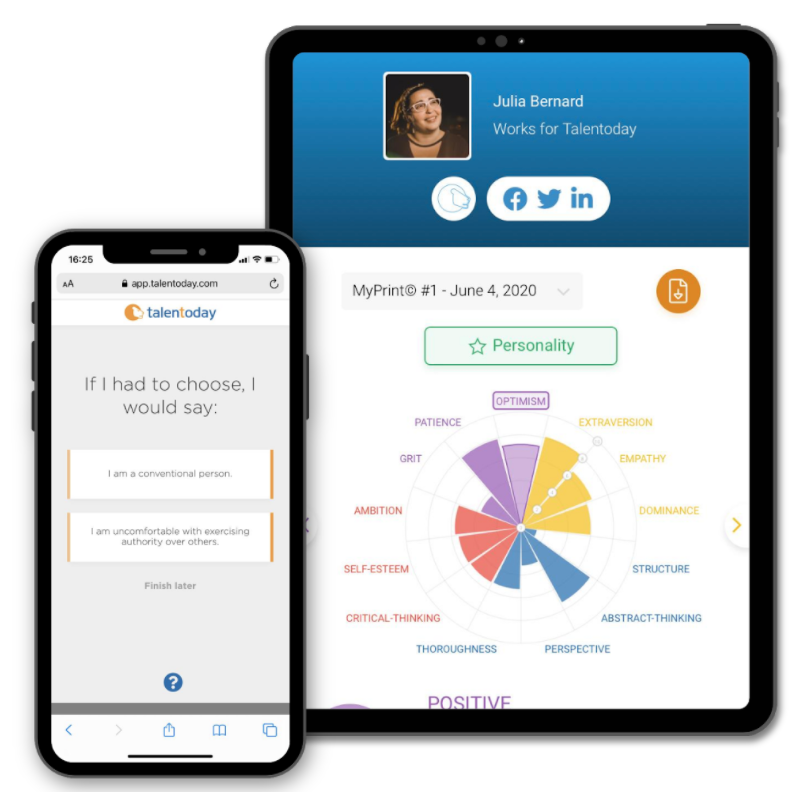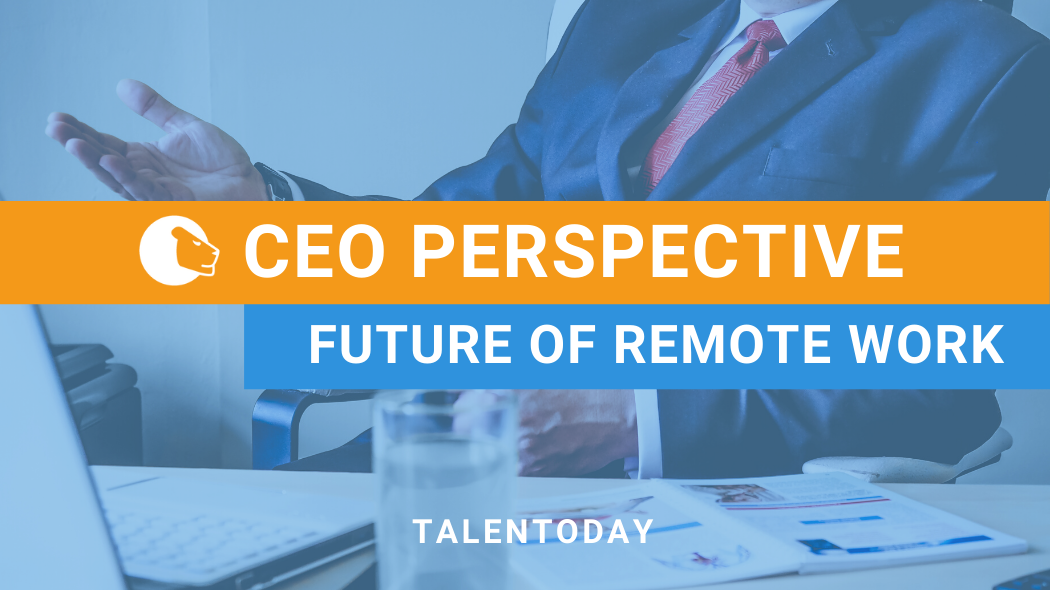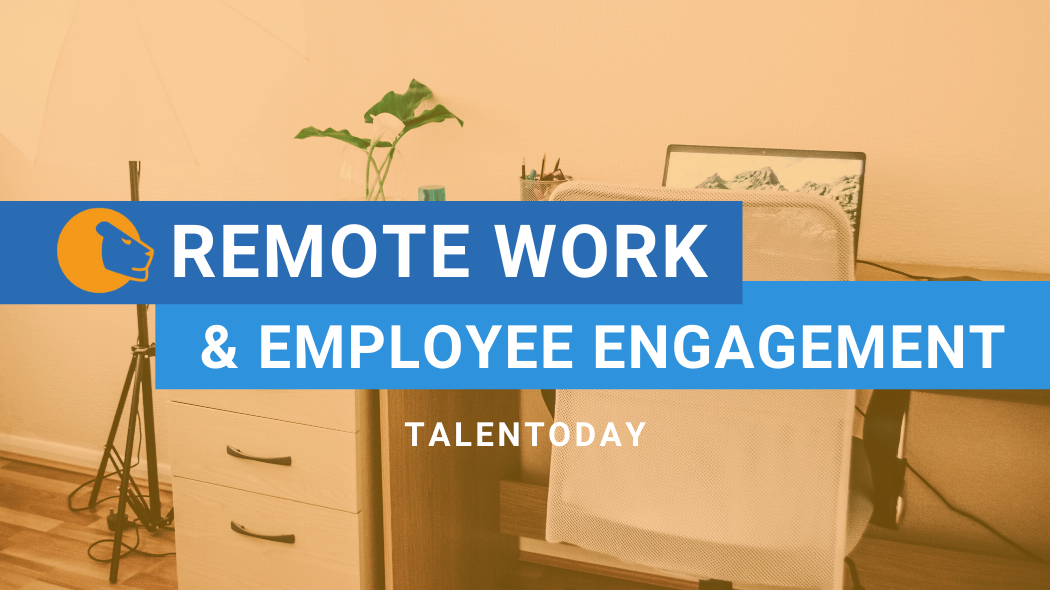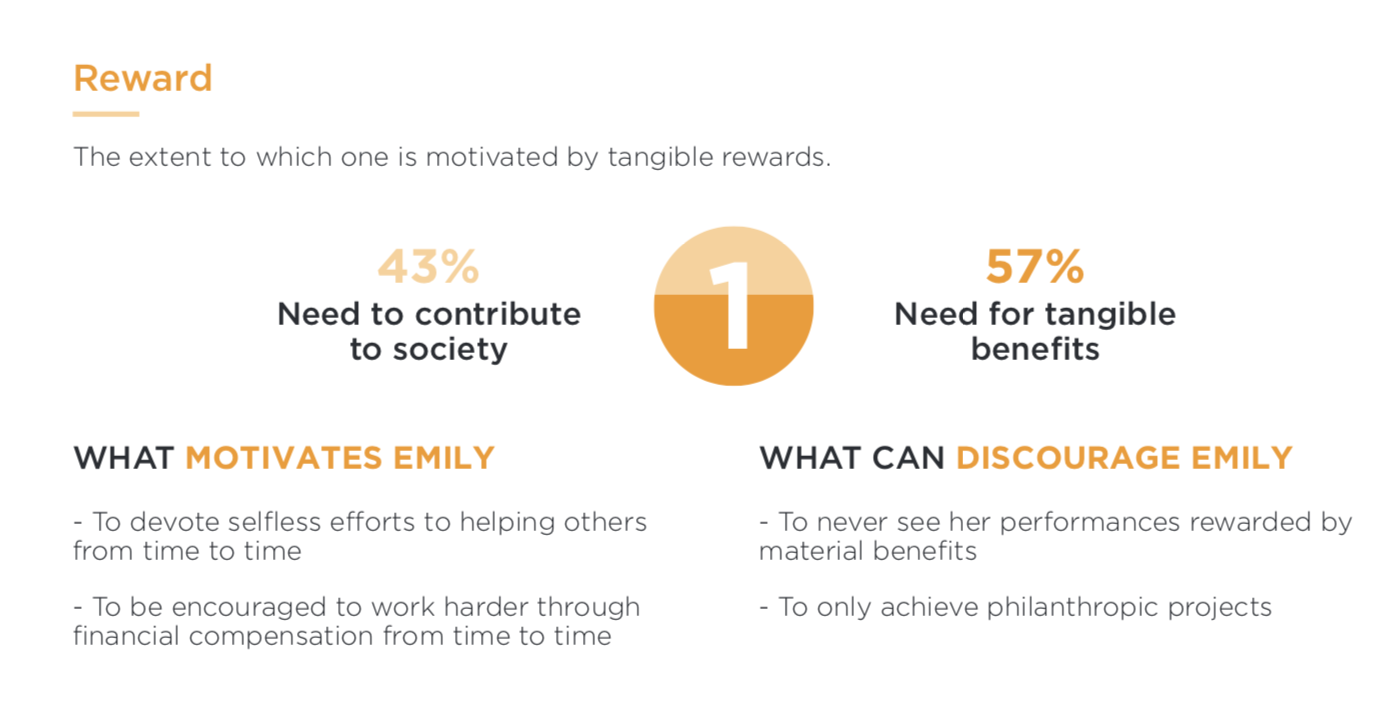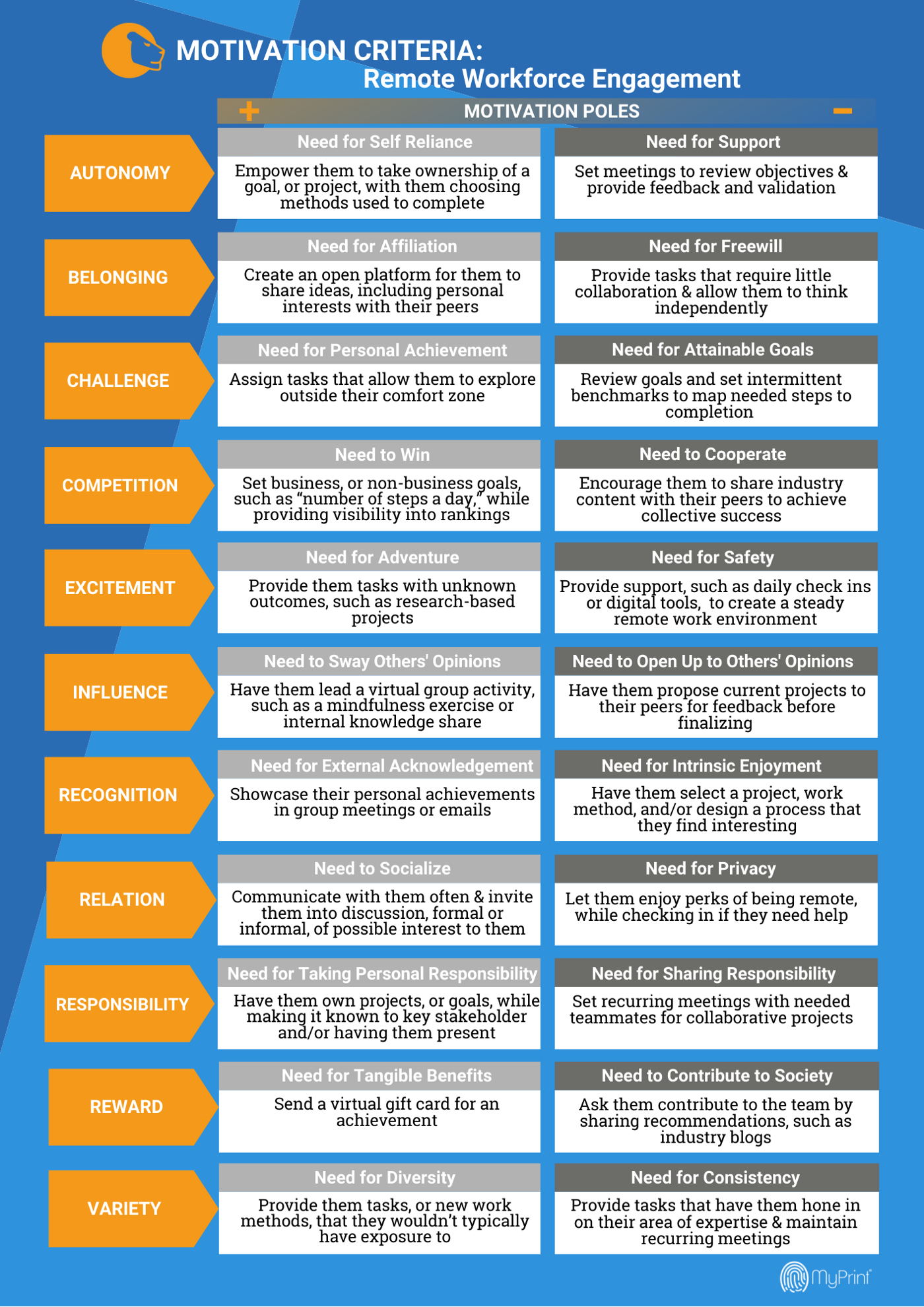Using Technology to Further Your Diversity, Equity and Inclusion Efforts
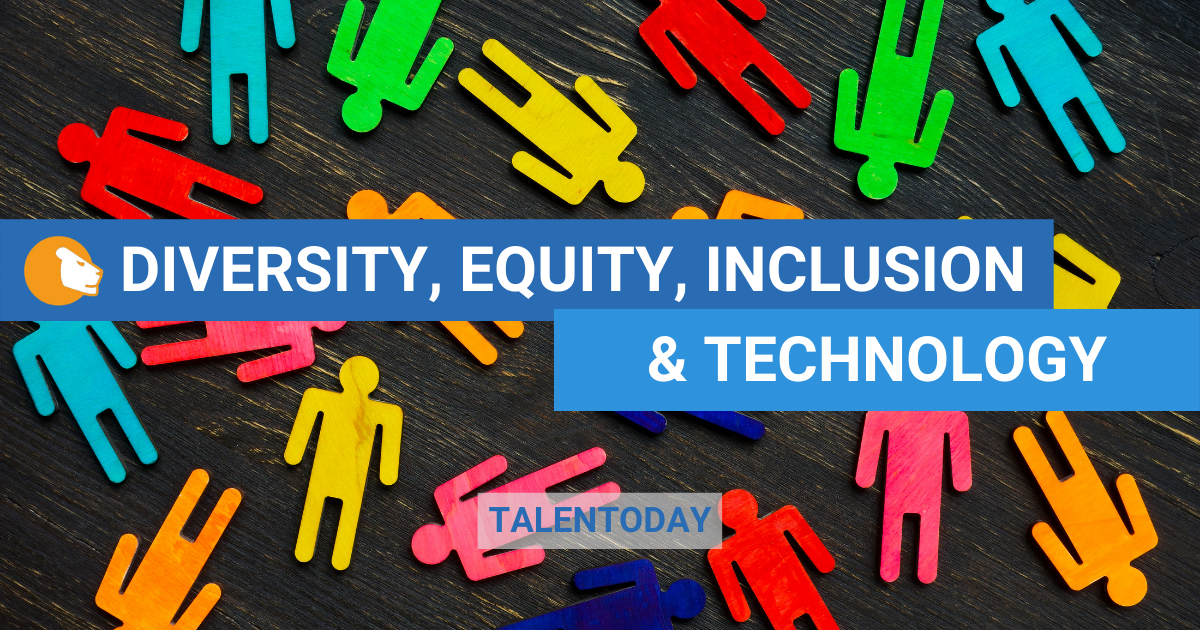
Workplace managers and teams are prioritizing Diversity, Equity and Inclusion (DEI) more now than ever before, and for good reason. DEI helps improve the presence of people of different races, genders, religions, sexual orientations, etc. (diversity); the fair and respectful treatment of all people (equity); and the extent to which all individuals feel respected, accepted and valued (inclusion). DEI also delivers a multitude of benefits that come from having a diverse population in your organization, including: profitability and value creation, innovation, and better decision making.
While business leaders have committed to diversifying their workforce, HR professionals and recruiters are still tasked with hiring the right people. Thankfully, science and technology can help organizations make the right hiring decisions while supporting DEI goals. Digital solutions and tools can help with everything from removing implicit bias from the selection process to predicting how someone will contribute to a team, and understanding how they will behave in a professional setting.
Opportunities and pitfalls associated with diverse hiring efforts
Research shows that bias is present in the hiring process and can start before a candidate walks in the door. For example, certain verbiage can attract more men than women, and people with white sounding names receive more callbacks on average than those with stereotypically black-sounding names. Implementing tools, such as a behavioral assessment, in your selection process can help you to proactively remove implicit biases. You can see a person for their strengths and not lean towards someone who is similar to you.
A common term that is used in the selection process is “culture fit.” However, when maintaining organizational culture becomes the sole focus of this process, it can have the unintentional consequence of hiring different versions of the same person. Allow your core purpose and values to guide you, while being cautious of how you equate those to your “culture” and how you assess a candidate’s ability to uphold your purpose and values. By making room for diversity to be a part of your culture, you will be empowered to celebrate and appreciate the value that each person is adding to your organization.
Diversity beyond what the eye can see
Before blindly jumping into diverse recruiting initiatives, decide what diversity means for your organization. Is it women in leadership? Recruiting and hiring people of color? Creating a comfortable environment that supports various stages of life? All of the above?
Think of the product or service that you’re selling. Can you confidently say that your team is reflective of the people you serve? Having people who can relate to your customer base is vital to the success of your organization. In fact, a team member who shares a client’s ethnicity is 152% more likely to understand the client. In this case, the diversity that we are striving for is easy to identify, and sometimes it goes beyond what we are able to outwardly see.
Understanding the importance of diversity of thought is an important step for your team to reach their highest potential. When team members are able to bring in different perspectives, it helps to create a culture of challenging the norms to allow for new and creative ideas and solutions. These various perspectives are the result of distinct life experiences or work backgrounds and can guide your team to greater successes.
How to leverage science and technology within your DEI efforts
As with any strategic change, diversity within an organization doesn’t happen overnight. It will take months of ongoing planning and years of commitment to become a part of the fabric of your organization. Luckily, there are things you can do immediately to promote equity and inclusion .
Create a culture of openness. Allow for ideas to be heard and create a safe environment for people to propose ideas. Give power to all members of your team to make decisions, and provide actionable feedback to their ideas rather than criticism.
Assess your team to see what areas you are lacking in. Confront skill gaps and then solicit teammates with diverse opinions to help you make business decisions and aid in brainstorming solutions.
Leveraging science and technology is a great way to ensure you are taking implicit biases out of the equation and being efficient in your efforts. Tools such as the MyPrint Collaboration Report are helpful for understanding how differences between two people can be beneficial, and visualizing group data through the Group DNA feature can help to find where your gaps are in your team.
Although change doesn’t happen overnight, there is nothing stopping you from starting the momentum today. Start by fostering inclusion on your team today by telling someone how their work matters. Then, take our complementary MyPrint assessment to start understanding how science and technology can support your goals!
Looking for additional resources and support? Email Talentobe at customer@talentobe.com to learn more about our assessment and services!
Harnessing the Full Power of People Analytics
We all know that recruiting has inherent risk. A CareerBuilder survey found that nearly three in four employers have hired the wrong person for a position. Bad hires not only have a negative financial impact, but can reduce productivity and be a blow to company morale. Even if your initial hire is spot-on, keeping talented employees on board can be extremely challenging. That’s where people analytics comes in. It’s likely you’ve heard or read this phrase before — but what does it really mean?
People Analytics — The Short Version
HR Technologist defines people analytics as “the deeply data-driven and goal-focused method of studying all people processes, functions, challenges and opportunities at work to elevate these systems and achieve sustainable business success.” Simply put, people analytics is:
- Data driven — you need to gather data and use it
- Goal-focused — you need to know how the data will be used and what you want to improve
For human resource and staffing professionals, people analytics has the ability to transform the entire talent lifecycle, from recruitment, assessment and hiring to team building and development. McKinsey data shows that people analytics can lead to an 80% increase in recruiting efficiency and a 50% decrease in attrition. It can also help reduce bias in hiring by bringing in a diverse slate of candidates and create more inclusive workplaces by identifying discrimination.
It’s Only as Good as the Data
As with all science-driven solutions, people analytics is only as good as the data it’s being fed. While certain hard skills and experiences are easy to quantify, understanding soft skills and behavioral factors that determine lasting success requires sophisticated technology.
To get good data, you first need to identify your priorities and objectives. Are you trying to reduce the cost of candidate screenings? Improve the quality of your hires? Create a more diverse workforce? Upfront planning allows you to develop a rigorous candidate assessment, including customized interview questions, that gets to the root of each individual’s personality traits and behavioral and motivational factors. Some data points you may want to consider include:
Once the data is gathered and analyzed, it needs to be compiled in such a way that is accessible to the people that use it. For most of us, visual data representation provides a clear and concise picture that captures our attention and allows us to process the information more quickly.
How Can it Help Your Organization?
People analytics is critical for making better, more informed hiring decisions. While intuition is a valuable tool during recruiting, it shouldn’t be used in a vacuum. Instead, combining your gut instinct with science that uses algorithms and predictive analytics to develop a more accurate and complete talent profile will yield greater success.
Beyond hiring, people analytics is valuable for any area where people are involved in your business, including how you can leverage employee strengths for both the organization’s advantage and the individual’s career growth. Here are a few common examples of areas that businesses can benefit from gathering and using data throughout the employee life cycle:
It’s also important to note that people analytics should never be static. It needs to be a dynamic activity that evolves with individuals and teams as they move through the employment life cycle. The more employees and talent leaders use it, the more value and insights it delivers.
Where do I start?
If you’re looking to make a better placement, team building, and development decisions for employees and teams, assessing soft skills using people analytics software is a great place to start. To learn more about our scientifically-backed assessments, including MyPrint® and Talentobe Manager, email us at customer@talentobe.com. We believe that once you have more information about the personality and motivations of your employees, you’ll be able to make more informed decisions grounded in science.
How to Conduct a Soft Skills Interview in 4 Easy Steps
If you have been following our blog then you know how important we think soft skills are to incorporate into your daily work lives.
“Hard skills will get you the job, but soft skills will make you successful.” -Me, at least 3 times per week
However, sometimes this can seem overwhelming. Where should you, as a manager, start? In this blog article we will take a step-by-step look at how to use soft skills from the very beginning of the employee lifecycle: the interview process.
Step 1: The Job Requirements
At first glance, you might think you know what goes into a position. Maybe you have been hiring for this position for quite some time, or you have worked with individuals in this role before. Although you might think you know all of the important requirements for a role, it is still important to take the proper steps to evaluate a job description in order to make a more informed decision on what the role entails.
Once you have determined what hard skills and qualifications are necessary for a position, it is time to determine what soft skills will help someone be successful in this role. There are many ways to find this information. Here are a few of the common ones:
It is very important that you are using a scientifically reliable and valid method to assess your teams’ soft skills. For the purpose of this article, we recommend using the MyPrint® assessment to assess your current workforce and using some of our tools available through Talentobe Manager to determine what to look for during the interview process.
An important note here: although you are looking for commonalities among your top performers, that does not mean that you want a cookie cutter of those individuals. One of the most important things for a team’s success is having diversity among group members to help fill in skills gaps and increase creativity and innovation¹.
Step 2: Preparation
Now that you have determined what the important soft skills are for the position, you need to prepare for the interview. Having a set interview process helps to ensure that you are making more informed decisions for your company and not using personal judgments or unconscious biases when hiring. Topgrading² is one example of an interview methodology that is intended to help identify top talent, and incorporating soft skills into this methodology is seamless.
Prior to the interview starting, you will also want your candidates to complete a MyPrint® assessment (check that their results are from the past 6 months to ensure accuracy). Make sure that the hiring manager and anyone involved in the interview process have taken the time to review the candidate’s MyPrint® One Pager (soft skills summary) and are familiar with the soft skills that have been determined important for the role.
To prepare for the soft skills portion of the interview, we recommend that you have the Premium Report version of the candidate’s results handy and review their top 3 personality strengths, motivators, and behaviors (as shown on the One Pager report). Then ask yourself the following questions:
Lastly, take a look at the candidate’s behaviors. The MyPrint® Premium Report has two interview questions tailored to each behavioral style to help gain a better understanding of how that individual showcases those styles. Make a note of any behaviors that you would like to dig deeper on, and have those interview questions ready to go!
Step 3: Conducting the Interview
When conducting a soft skills interview, it is important to stay open minded. If someone’s top three MyPrint® traits aren’t the exact three that you are looking for that does not mean they are not going to be a good candidate. Instead, look at their Premium Report to see where they fall on the scale for each of those traits. Take the time to ask questions around those topics, and make sure that you are being clear about the role expectations and see if that matches what they are looking for.
Step 4: Scoring the Interview
Once the interview is completed and the candidate has left, it is not time to make a decision quite yet! Take the time to review your interview notes and apply some quantitative metrics to what you were looking at.
To ensure fairness between candidates, use a standardized method of scoring the interviews. Grading methods can include ranking responses or finding the difference between ideal scores and actual scores in their MyPrint® scales.
To Sum It All Up…
Using soft skills in the interview process can help you make more informed hiring decisions, and help you find candidates who will be more successful in their role. The interview process is an investment for everyone involved, so it is not something that should be done without careful evaluation and purpose.
Remember to be open-minded when it comes to soft skills; you won’t have all of the answers right away. As you gather more information over time you will learn more about what personality traits, motivations, and behavioral styles can be attributed to success in a role and sometimes, what you find might surprise you!
Want more information about soft skill interviewing, or to receive a copy of our template? Email Talentobe at customer@talentobe.com to learn more about our assessment and services!
Sources
Better Assess Your Workforce Using Group DNA
Every living organism is made up of a unique genetic code of DNA. Although the same organic components are used the outcomes can be vastly different from one another. The same thing goes with teams. Think of your work team as a strand of DNA. Some team members might share certain common traits with one another, and those become a prominent part of your overall team behavior. Similarly, having variety in your strengths can also increase team synergy. Losing parts of your team, rearranging responsibilities, or adding more members to your group can all impact the outcomes, and being able to effectively measure and assess your workforce enables you to understand and guide your team to reach their full potential.
Assessing for hiring
There are multiple things to consider when assessing a new hire for your team. Having a thorough understanding of their background and skills, for example, are important for making sure that the individual has the ability to do the job. These things can be assessed using various methods such as Structured Interviews, reference checks, and based on education or previous experience.
Another important aspect to consider when hiring for your team are the soft skills that an individual possesses. Finding the strengths that they will bring to your team and seeing how they will fit in with your team’s current soft skill DNA are important to maximize each person’s potential and help your team to stay engaged and successful in their work.
When assessing individuals’ soft skills be sure to use a valid and reliable tool rather than going off a gut feeling. The MyPrint® is a scientifically backed tool that is both valid and reliable for use in the workplace. The 155 item questionnaire provides detailed insight into an individual’s personality traits and motivations as well as their professional behaviors. This information can be used when hiring a candidate to see if their strengths fit in with what the role requires, as well as to get a better understanding of environmental or culture fit.
Assessing your current workforce
Assessing your current workforce helps to ensure that employees are receiving the proper guidance and support they need to do their jobs well. This can be done through performance reviews, measuring key metrics, or frequent 1:1 check ins with your employees.
In addition to goals and performance, understanding your team from a soft-skill point of view is beneficial for working as a group and engaging your employees. Once your entire team has been assessed using the MyPrint®, you can view their results via their individual reports, or by using the new Group DNA feature that is coming soon to the Talentobe Manager platform. Being able to see where your team as a whole falls in terms of their soft skills can help you to ensure that your team is using their strengths as well as figuring out where the gaps are that you need to fill. In addition, being able to see the common motivators among your team helps to come up with ways to motivate and engage your workforce from a global perspective which is helpful in certain situations where you can’t tailor the work environment for each individual.
First look at the Group DNA feature
Below is a sneak peak of what the Group DNA feature looks like! This example was made using 10 members from our very own Talentobe family. You can see that our team is made up of individuals who are Extroverted and Positive, which is always fun when we have team celebrations! We are also Confident, meaning we are self-assured in our abilities (rightfully so, we have very talented people on our team!) and we are Big Picture thinkers, always keeping those long-term solutions in mind as we continue to innovate and create new features.
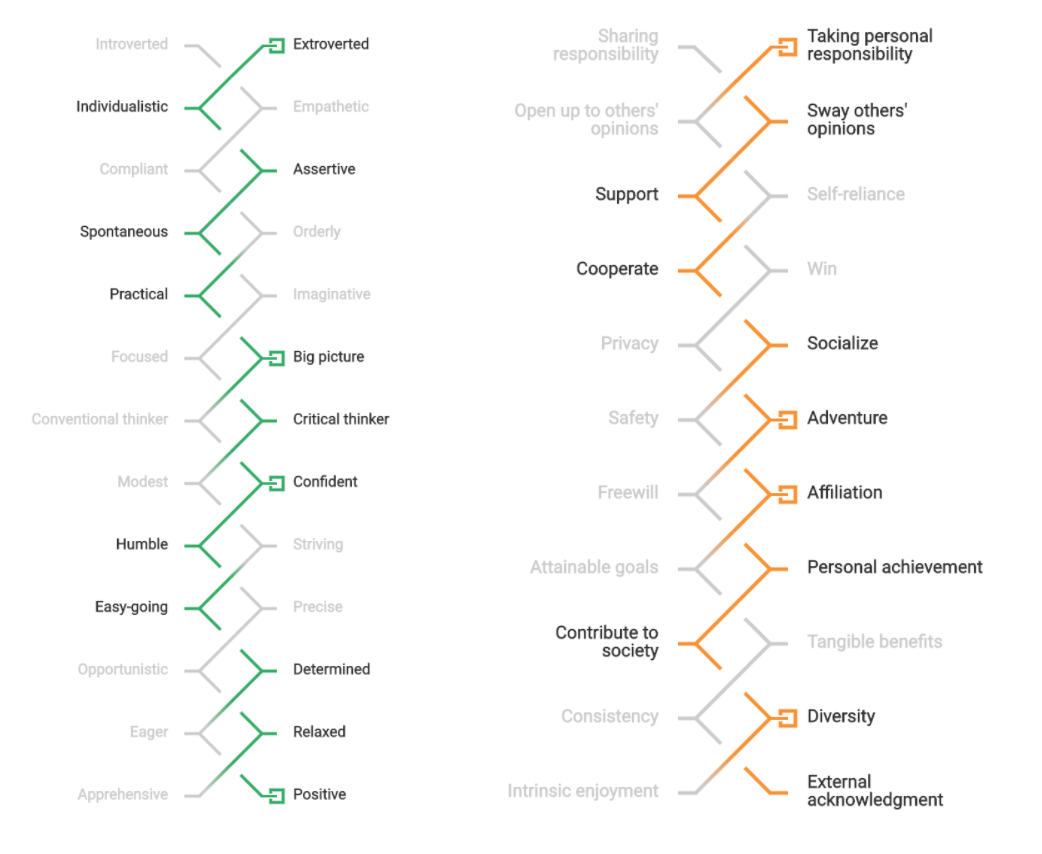
When it comes to motivating our team, the most important things are that we have Personal Responsibility for our work, but still have a Need for Affiliation and to share common interests with our peers. We also like to be kept on our toes with a Need for Adventure and Diversity — we like to spice things up around here!
Why this is important
The purpose of the Group DNA feature, and assessing your team’s soft skills, is to help visualize the data. The information provided is not necessarily indicative of work performance, but it can be used to understand the work culture of a population.
By understanding this data and keeping up to date with the DNA of your team, you can work to create an ideal work environment by setting relevant goals and rewards, as well as by solving conflicts the right way!
Are you interested in learning more about the upcoming Group DNA feature, or are you looking for additional resources and support? Email Talentobe at customer@talentobe.com to learn more about our assessment and services!
Preventing Employee Burnout
When was the last time you were recognized for your hard work, whether it was from supporting another team, leading a meeting, doing a presentation, or even just getting through a large workload? Chances are this is something common to receive praise for, both from your colleagues as well as your friends or family. Now think of the last time that you received similar praise for taking a bubble bath, meditating, or going for a walk. You most likely haven’t received as much as a pat on the back for partaking in any of these activities.
Obviously those are two completely different and unrelated things, right? Well, kind of. However if you are receiving praise for doing something, you are likely to continue doing that thing, right? So if we are constantly being praised for working hard, but rarely for self-care, then what happens? That, my friends, is the topic of the day: Burnout.
What is burnout?
So what is burnout anyways? Essentially, burnout is overworking yourself to the point of physical, mental or emotional distress². Everyone has a different threshold for how much they can work before experiencing burnout, but a huge factor in this is how you feel about the work you are doing. When you are satisfied with your work — when you are engaged and motivated — you are less susceptible to the stressors that can bring not only mental or emotional, but also physical distress to your body³.
What causes burnout?
There are multiple factors that can lead to employee burnout, but one of the main things is the lack of satisfaction that one has with their work¹. Some people are lucky enough to have found work that brings them great joy, and even these individuals are able to experience burnout.
When work stressors build up over time, they will eventually boil over and lead to burnout. This can result from having an unclear idea of what you are supposed to be doing in your role, taking on too many responsibilities, lack of recognition, working long hours, or not carving out time to take care of yourself. These are just a few of the factors that can lead to employee burnout, especially if no preventative measures are being taken.
Why is this something I should be concerned about?
As we have mentioned before, burnout can have an impact on your mental, emotional, and physical wellbeing³. Mentally, burnout can make it hard for someone to focus, and they will often be distracted and have difficulties getting their thoughts together. Emotionally, it can lead to irritability and detachment from others. Physically, burnout can lead to multiple issues such as headaches, sleep disorders, and even cardiovascular disease.
Preventing burnout
The first step to preventing burnout, is learning more about yourself and your employees. Understand what it is that motivates you and your team, and make sure that those motivations are being fulfilled. Research shows that individuals who are motivated and engaged in their work are less likely to experience burnout¹.
Rather than guessing based on gut feelings, or trying to motivate an entire workforce in the same way, you can assess your team to discover the unique ways to motivate and engage them. Leveraging tools such as MyPrint® can help you assess your team and help you motivate and engage your workforce in a more effective manner. Click here to read our blog post from earlier this year on step by step instructions on how to engage your remote workforce using MyPrint®, and see the chart below for more ways to motivate your team!
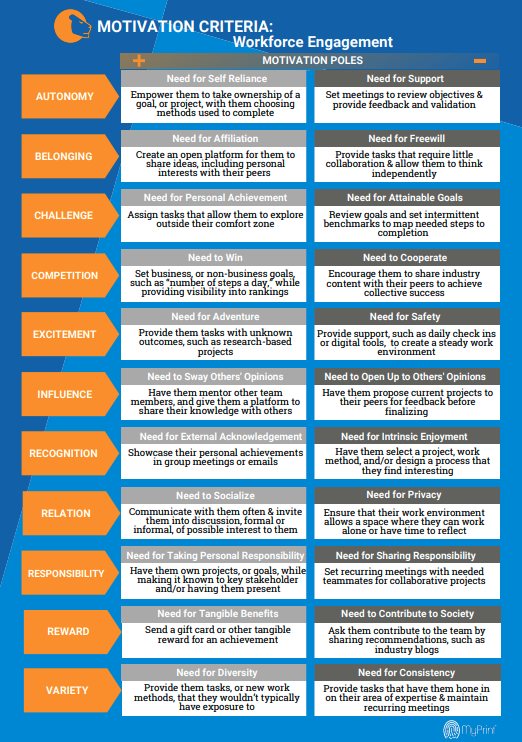
Even if you are the most motivated, satisfied, engaged individual, that’s still not enough to fully prevent potential burnout. Finding work-life balance is just as important! Here are some tips to set you up for success:
- Set boundaries: Set a time to consistently end your work day, and try to stick to it as much as you can. Restrict checking emails in the evenings, or turn off the alerts so you are less tempted.
- Time blocking: Set aside time on your calendar to ensure you get your work done if you find yourself constantly in meetings. Schedule short breaks if you are not someone who naturally takes breaks throughout the day.
- Have a designated work space: If you are working remotely, or often find yourself working at home, have a designated space for work (if possible) that is separate from where you like to relax and spend your personal time.
- Take breaks: Take time during the day for a mental break. This can include taking a coffee break, going for a walk, closing your eyes for a minute, or doing anything that is not work related.
- Find what makes you happy outside of work: Find a hobby that brings you happiness, spend time with your loved ones, get exercise or spend time in nature — find something that will increase your life satisfaction outside of work.
To sum it up…
If you have been feeling a little overworked or stressed out, use this as your sign to take care of yourself! Take a break. Meditate. Go for a walk. Take a minute to stretch or do yoga. Read a book. Cook a nice meal. Learn a new instrument. Do something for yourself to help find that perfect balance between work and play!
If you’re interested in using MyPrint® to motivate and engage your workforce, please visit www.talentoday.com or contact our experts at contact@talentobe.com
Sources
¹ Duffy, Dik, Douglass, England, & Velez (2018). Work as a calling: A theoretical model. Journal of Counseling Psychology, 65(4), 423–439.
² Maslach, C. (2003). Job Burnout: New Directions in Research and Intervention. Current Directions in Psychological Science, 12(5), 189–192.
³ Smith Bailey, D. (2006). Burnout harms workers’ physical health through many pathways. Monitor on Psychology, 12(5), 11.
Are Remote Workforces Shaping a “New Normal”?
At times like this, it can be difficult to see the light at the end of the tunnel, as our personal and professional lives are sent in disarray as we cancel, adjust and adapt. It is important to remember during this difficult and complicated time that we WILL get past all of this, and things will go back to normal. But what exactly does normal mean? Of the adaptations we make in business and at home over the course of time to come, what residual long-term impacts will this have on how we communicate, perceive, socialize and work?
To gain insights on the latter, we spoke with an expert in the world of work, Andrew Limouris, the global CEO of Talentobe and CEO of Medix, a staffing company based out of Chicago, for his opinions on how the paradigm of work might shift.
What immediate impacts have you seen from your purview in staffing on how organizational operations have adjusted at this time?
“Obviously with the early warnings of an imminent social isolation order, the very first shift we noticed was internal meeting cadence and structure. People became more conservative and concise in conversations, and organizations scrutinized which meetings were truly necessary face-to-face versus over email. Then came the shift to entirely remote workforces. Organizations needed to entrust their teammates to carry out their duties in remote settings, therefore adjusting communication and in some cases accountability measures. Individuals needed to self-discipline and set up their day to achieve success in sometimes distracting environments. Technological accommodations had to be made on organizational levels. And organizations clamored to figure out how to keep team culture alive and remove collaborative barriers that could be achieved through technology now that physical barriers were imposed. The key for everything has been understanding: understanding who your people are- both their hard AND soft skills, understanding who your managers are, understanding the environments that make them successful, and understanding their viewpoints and perspectives.”
What external impacts has that had on organizations, especially those like yours in the services industry?
“For Medix, we serve two different groups of ‘clients’: the talent we place and the companies we place them at. For interviewing talent, it is our literal job to ensure we understand who they are, their aspirations, their motivations, their strengths and weaknesses, to place them in environments and opportunities they will thrive in. Shifting to complete online interviewing adds just one more layer to chip through in getting to truly know someone. On a company/client group level, with all meetings being switched to virtual, organizations find it that much more imperative to understand goals and intentions as early as possible in a conversation in order to maximize the impact of virtual meetings that tend to have enough distraction and mental interruption as is. It isn’t insurmountable, but it has been a challenge.”
What have been the positive ramifications of these changes?
“I believe organizations are finding new efficiencies that might not have existed before. Our communication has become more concise, and by virtue, oftentimes more powerful. One beautiful thing that has emerged in organizations is trust. Companies are setting up the accountability infrastructure for truly efficient and empowered teams. Employees tend to appreciate this autonomy, which can reap benefits in increased engagement and psychological safety with their places of work.”
What are some of the challenges?
“Operationally speaking, it is already intensely difficult to source, screen, hire, onboard, motivate, engage and grow effective teams. If it was easy, companies like Medix or Talentobe wouldn’t exist. The only way to do this effectively, as I mentioned, is to have a deep, robust understanding of who a person intrinsically is- not just what’s on their resume. Not just what they tell you in annual reviews. Adding a veil of technology only intensifies those challenges. My biggest fear regarding remote work is and always has been the impact it could have on our culture. Maintaining team collaboration and a cohesive vision in a remote environment is tough.”
What are your thoughts on the long-term impacts and how to handle them?
“It’s most organizations’ goal to achieve operational and financial efficiencies, so as companies spend the months ahead figuring out how to maximize their teams’ time and energy, I would not be surprised to see less lengthy meetings in boardrooms in the future, and many more flexible work programs surface. If they prove to be effective operationally, as well as motivating or incentivizing to employees, I would expect employers who might have been adverse to them in the past experimenting with implementing more widespread remote offerings to teammates. The caveat is going to be to continue to balance those efficiencies and benefits with the costs and risks I mentioned. What can be achieved through technical skills can sometimes be interrupted with soft-skills incongruencies due to environment and work styles, and aligning individuals with roles, teams and cultures that don’t need physical presence to be effective will be increasingly important.”
With still uncertain times on the horizon, one thing that is certain is that for employers and citizens at large, we will want to spend this time deepening our understanding of our companies, our teams, our social circles and ourselves, in order to best adapt to the potentially long-term or in some cases even permanent aftermath to our workstyles and lifestyles in general.
If you’re interested in learning more information about Talentobe, please visit www.talentoday.com or contact our experts at contact@talentobe.com.
Use MyPrint® to Engage Your Remote Workforce
In the early months of 2020, HR professionals and managers have been faced with the biggest unilateral shakeup that doesn’t discriminate against industry or country borders, the COVID19 global pandemic. Workplaces with previously strict or conservative remote work policies may find themselves in a non-negotiable situation as “social distancing” is the new norm; that of course, is if you’re lucky enough to work in an industry or position that allows you the ability to work from home. While some may find themselves out of work, others are on the frontline of the pandemic, such as medical staff and grocery store workers. For managers creating an office at home, it poses the question: how do I be present and engage my team virtually?
At Talentobe, we have a passion for unlocking the keys to employee engagement, management and teamwork, which is the driving force behind our MyPrint® assessment. Through our assessment, coupled with our web application, we offer digital solutions to managers for effectively engaging their team. While our assessment wasn’t originally designed to provide instructions for remote team management through soft skills, we’ve been able to identify the direct correlation between results and how to put this knowledge to use in a remote work setting. The below is a step-by-step guide, with advice, on how to leverage assessment results for your remote team.
Step 1: Have your team spend 20–30 minutes completing the MyPrint® assessment.
Immediately after completing the assessment, they’ll have access to their personality radar, motivations and professional behaviors. While some of your team may additionally be experiencing a period of self-isolation, or having limited social exposure, this allows for dedicated time for a bit of self-care and self-reflection, by allowing them to take a deep look into their strengths (or potentially some areas they could seek additional training during this remote period).
Step 2: Look at the unique motivations across your team and figure out what motivates, and discourages, your team.
Working from home, coupled with isolation, some may experience a lag in productivity and engagement. As a manager, this allows you the opportunity to step in and rally for success. Within the motivation poles, managers are given tailored guidance based on individual results for what motivates an employee, as well as insight on what can discourage them. See below for an example:
Step 3: Start tailoring motivation to individual results and empower an engaged remote workforce.
After taking a look at your teams’ results, you’ll notice that there are 11 motivation categories, with two different criteria for each motivation. We refer to these criteria as either the “positive side,” at the high end of the pole, and the other as the “negative side,” with it being on the lowest end of the pole.
In the below graphic, you’ll see engagement examples that align to both the “positive” and “negative” sides of the poles to help tailor motivations to individuals on your team.
Long after the COVID19 pandemic is behind us, Talentobe will still continue to provide quality solutions that help professionals make empowered decisions through data analytics. To keep building on the momentum sparked through remote work engagement, our solution offers additional features and insights; whether it’s learning how to best collaborate with another individual or asking more meaningful interview questions tailored to their MyPrint® results, we look forward to continuing to serve our global community and provide purpose during this time of uncertainty.
Ready to take the MyPrint® assessment? Set aside 25 minutes, in a non-distracting space, and click “Take the free test” on Talentobe’s website (www.talentoday.com).
For more information on Talentobe and how to utilize our reports and features, reach out to us directly at customer@talentobe.com for both existing and prospective customers. For more information about our science and product, visit our company website.
The ROARing Twenties at Talentobe
To be honest, at Talentobe, the new hire experience means entering into a workplace of organized chaos. As many rapidly growing companies can relate to, having a world-class employee experience means that you’re in a balancing act between fostering employee development and driving business results. For Talentobe, we didn’t do it without some help. Following Talentobe’s acquisition by Medix in late 2018, the team adopted a new ambition for achieving results as a double bottom line company, meaning that we focus on both our profit and purpose.
Why do we do what we do?
Early in 2019, the team sat down and asked one simple question, “Why do we do what we do?,” to better understand the purpose of why we really come to work everyday. On an individual level, the Talentobe team is home for industry experts, ranging from software development, to cognitive science and operations, but being a double bottom line company means getting to the unified core of why each person has decided to put their passion into Talentobe. On its surface, the question posed a number of answers from “to provide the best psychometric assessment” to “having the best user experience”, but getting to the true core — our core purpose — it came down to the single idea of “empowering growth.” For our team, we come to work each day to empower the growth of the clients and members that we serve, but also to empower the growth of each other by putting our core purpose at the forefront of our employee experience.
Rally for Success
Working on the Talentobe team, each person is given the freedom to contribute to cross-departmental goals. It may seem out of character for a developer to be updated with sales objectives, but at the end of the day, our goals are connected. Meaning, all people are given visibility into company-wide goals and can contribute by making connections or sharing past experiences, thus winning as a team.
With our departments being highly specialized, creating a proper outlet hasn’t always been easy, but we’ve been able to make strides by offering an open platform through company meetings and communications, while providing an open invitation for feedback. Our team’s contributions are without a doubt how we achieve success, but following those contributions with recognition is key.
Recognition creates space to reflect on how we achieved success while celebrating the wins. It’s important to note that recognition can come in many forms, such as a ROAR (statement of recognition) or a cruise down the Seine, but no matter the size of the success — or the size of the recognition — it’s important to stop and celebrate.
The Only Constant is Change
By the time this article is published, it would be no surprise if within our team, or product, something has changed, but that doesn’t scare us. Change means that we’re striving towards our goals. Product development doesn’t stop, client needs change, and technology improves, so it’s safe to assume that employee needs are evolving in sync. Adopting an idea of constant change has allowed us to take a holistic approach to our employee experience. Remember the balancing act metaphor at the beginning? At Talentobe, our employee experience is a combination of industry best practices, business needs, and real employee feedback, with the goal of fulfilling our core purpose and ultimately people choosing the Talentobe team as their employer of choice.
To date, we’re not far into 2020 and it’s been a busy year for Talentobe — while some may call it ROARing! With a beautiful new office and growing team, we look forward to keeping our chaos organized, employees engaged, and product innovative as we take on the new year.
If you’re looking for more information on joining the Talentobe team, contact our HR department at recruitment@talentobe.com and or visit our Welcome to the Jungle page for current openings!
Employee Recognition to Turn the Holidays into the Season of Company Culture and Commitment
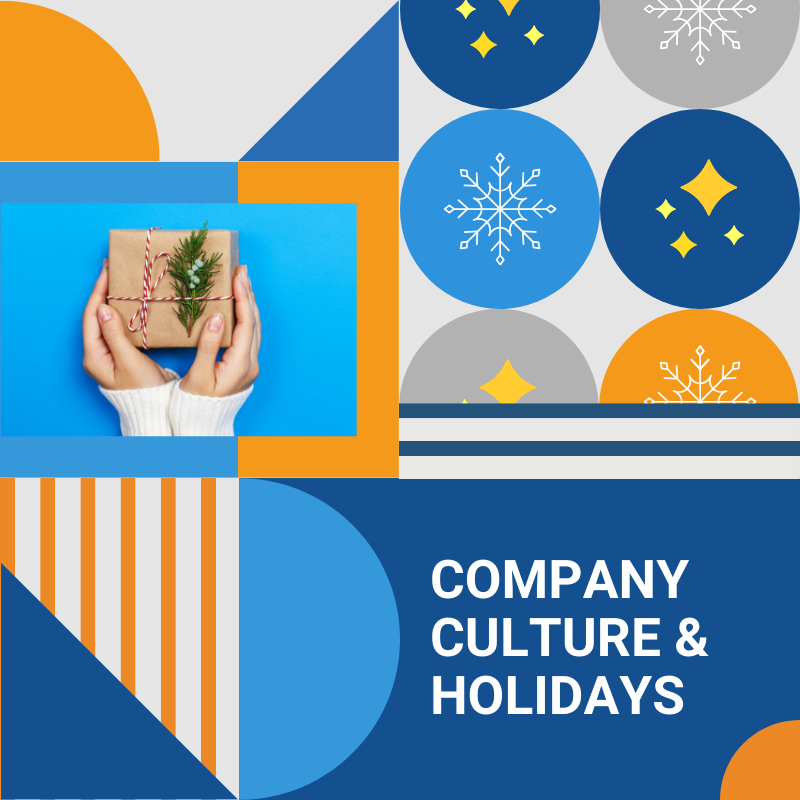
The holiday season can stir up a whirlwind of emotions inside and outside of work — from happy to excited, and for some, stressful. During the holidays, companies and teams may celebrate with special parties and events, but offices can also become ghost towns, with many employees taking additional time off. Adversely for some industries, the holiday season may be their busiest time of year.
Through the high points and low points of the holiday season, what can managers do to keep their employees motivated, while enhancing their commitment to the organization in the new year?
Make it Personal
Some organizations may have the luxury of being able to provide company-wide holiday presents and/or year-end bonuses, which can help with the overall sense fulfillment for employees. However, many companies do not have this option, or they feel like company-wide gifts may seem impersonal.
According to Great Place to Work, “It is key that employers focus on how they can make authentic and meaningful recognition part of their management philosophy in order to retain top talent and encourage high performance.” For managers, knowing that a need for unique recognition is important, the holiday season creates an opportunity to motivate employees on an individual basis to end the year strong!
Recognition Without Breaking the Bank
As can be seen by Talentobe’s assessment, individuals’ motivations are unique. While some people are heavily motivated by money, others may be more motivated by external recognition, or the ability to socialize.
To recognize individuals on your team, it could be as simple as writing an email or handwritten note, highlighting accomplishments throughout the year. Additionally, during the holiday season, employees may have the burden of hectic travel or spending their holidays away from their loved ones. For those teammates, consider giving them snacks for the road, a good book, or recommending a podcast to pass the time. For employees that will be spending time away from family and friends and missing their hometown, consider specific items that would remind them of home, such as candies, drinks, sports memorabilia or photos. Lastly, for employees who spend much of their year traveling for work, this is a great opportunity to provide a gift than can be shared with their family, such as a gift basket or a gift card for a meal together.
Establish Employee Commitment
Unfortunately for some organizations, the phrase, “new year, new me,” can often signal individuals looking to start a new job in the new year. Similarly, the start of the new year often means that new company budgets are established or replenished, allowing organizations to actively recruit.
Knowing this, the holiday season is a great time to ensure and re-establish commitment to the organization. Outside of recognizing individual achievements and rewarding employees on a more personal level, organizations can use this time to come together and reflect on the past year and provide transparency on goals for the upcoming year. Furthermore, outside of company-wide meetings, managers should be frequently engage employees by, “creating a respectful and trusting relationship with their direct reports, communicating company values and setting expectations for the day-to-day business of the organization,” as they play a key role in overall employee engagement.
As organizations are wrapping up their year-end initiatives and gearing up for 2020, it’s never too late to think of unique ways to serve and recognize the people giving back to the company on a daily basis. Whether a company is small or large, personalized actions or recognition can go a long way and can be done with little to no budget, allowing all employers a fair chance to motivate their teams this holiday season!
Knowledge Transmission and Engaging Expert Collaborators

In a global economy facing constant competition and ever-increasing challenges, companies must ensure the transmission of knowledge and know-how internally in order to move forward and progress. Knowledge management and internal knowledge sharing are crucial for companies to maintain critical skills.
Obstacles linked to human collaboration
Nowadays, the difficulty lies in the ability of organizations to stimulate a dynamic exchange of knowledge, while leveraging employee engagement. Due to a lack of self-confidence, demotivation or simply a lack of recognition from existing employee skills, employees are not always willing to cooperate and share their expertise. Management and managers will need to put in place incentives and develop a culture of recognition to improve knowledge transfer. It is necessary to set up a management system based on trust, a strategic lever in service of performance, for which the organizations HR or L&D leaders would be accountable for managing (1).
Multiple benefits for your company and your employees
The benefits for companies are plural. Knowledge management and transmission have a direct impact on financial gains and cost reduction through: expertise control, speed of task execution, productivity increase, error alleviation, risk management control, and time management for innovation. In fact, employees have increased motivation when they feel that they are acquiring skills quickly and can improve their work. Making them more inclined to change and ready to take up many challenges. In a world seen through the prism of the VUCA model, an acronym for “Volatility, Uncertainty, Complexity, Ambiguity”, organizations need a rapid transfer of knowledge in order to evolve and reinvent themselves, which requires a lot of agility and efficiency.
A new organizational model
New business models must be found while building on the knowledge and know-how, of the company’s core business. A new organizational model has emerged: the learning enterprise (2). In his research Jean-Louis Boutte explains and I quote: “ The company is now considered a living organism, beyond the biological and cybernetic brain, susceptible to organizational learning (Argyris and Schön, 1996). In this model, knowledge is considered as the first wealth and sources of added value. Cross-functionality, systematic networking and a permanent circulation of knowledge foster the emergence of new knowledge and collective intelligence.”
In the digital age, everyone becomes a contributor, designer, producer of ideas, content and opinions. This naturally leads to more collective and cooperative modes of organization that gradually replace pyramidal, hierarchical organizations. Ensuring the management of employees’ knowledge and skills assets becomes a source of sustainable corporate performance and employee employability, loyalty and engagement.
Sources:
- Management par la confiance et performances: Contributions actuelles et perspectives pour la fonction RH, Anne-Sophie Attia, Carole Legros Bradol, Flore de Soultrait et Marco dalla Palma ,Jean-Nicolas Moreau, Université Paris-Dauphine., 2017
- Transmission de savoir-faire, Réciprocité de la relation éducative Expert-Novice, Jean-Louis Boutte, Université de Provence, 2007.

